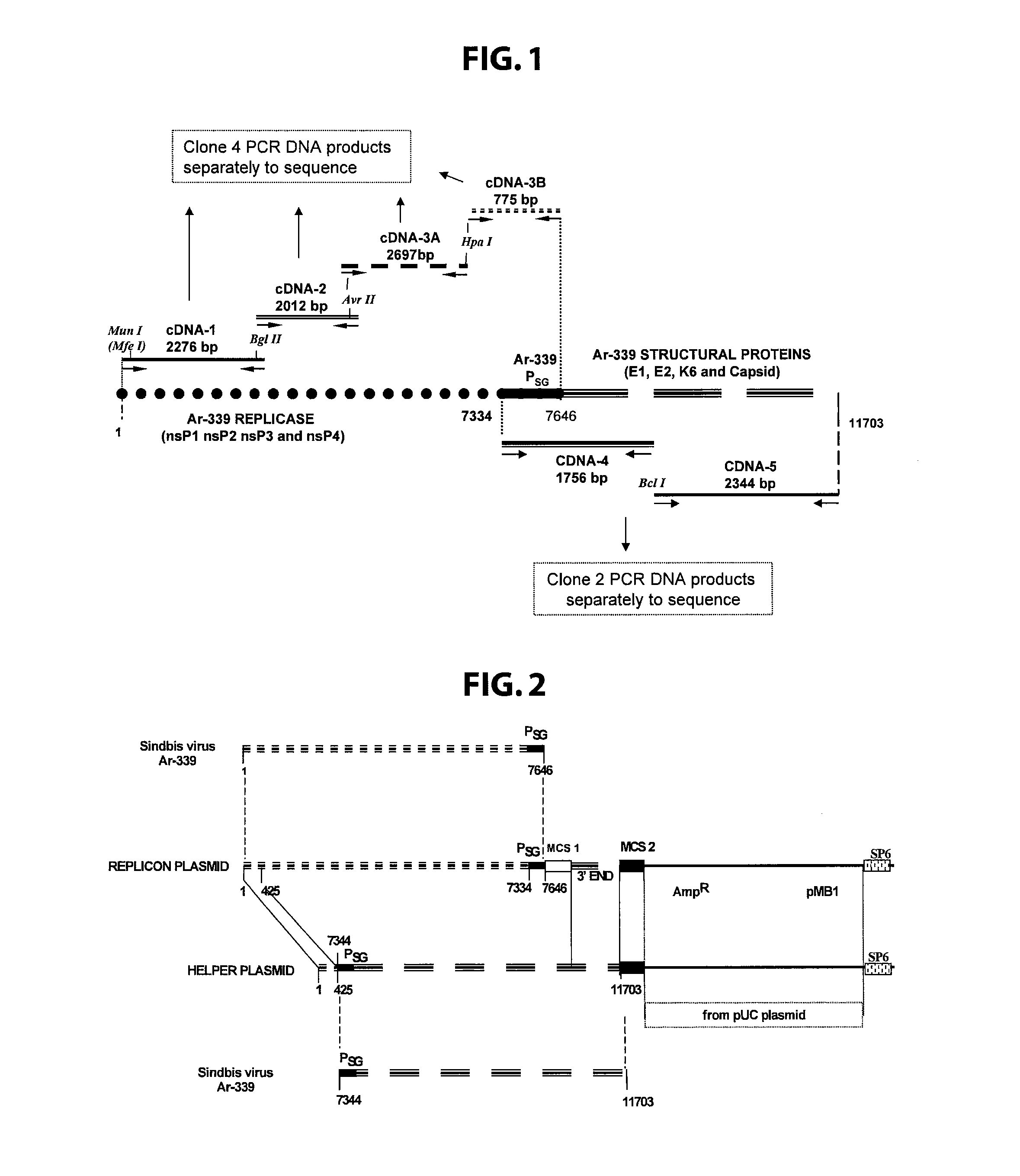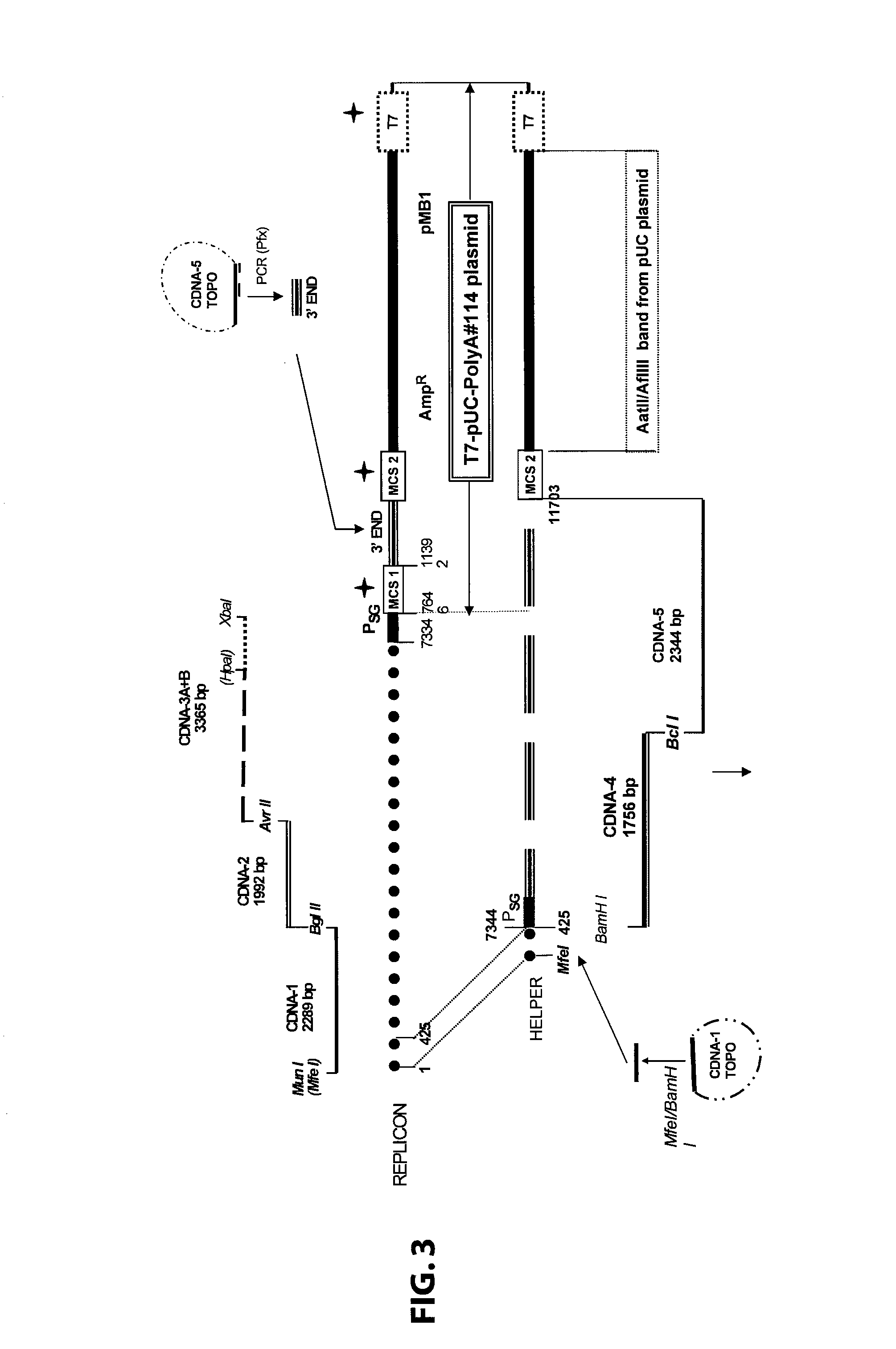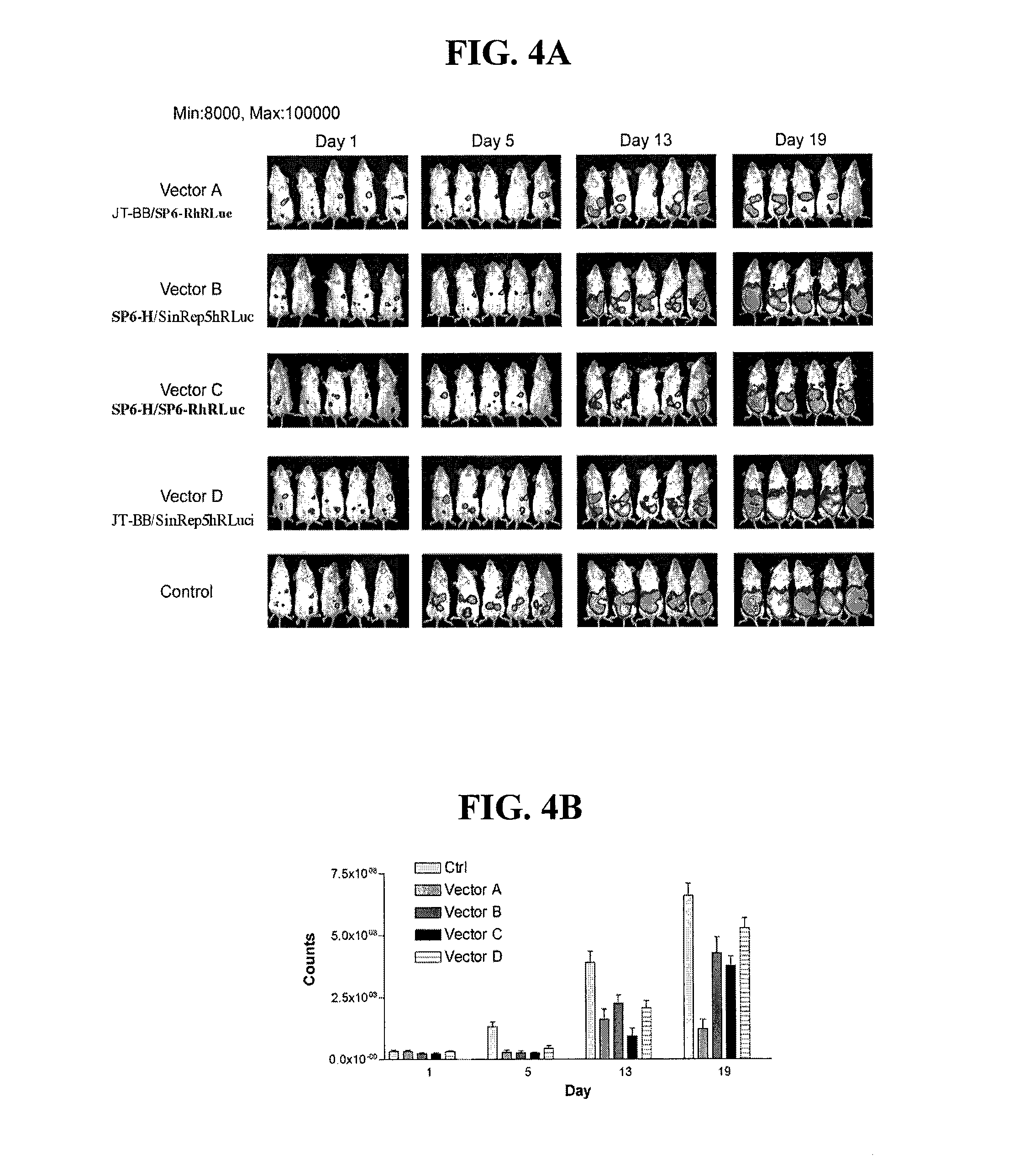Novel helper plasmid, defective sindbis viral vectors and methods of use thereof
- Summary
- Abstract
- Description
- Claims
- Application Information
AI Technical Summary
Benefits of technology
Problems solved by technology
Method used
Image
Examples
example 1
Sindbis cDNA Cloning
[0072]Common Techniques
[0073]Virus Provocation
[0074]Sindbis virus strain Ar-339 (Original) was obtained from ATCC (Manassas, Va., Item #VR-68) and propagated on a secondary chicken embryo fibroblast cell line, CEF. Cells were cultured in EMEM media (BioWhittaker, cat#12-684) supplemented with 10% Fetal bovine sera, NaHCO3 1.5 g / l; 1-Glutamine, 292 mg / l and Penicillin / Streptomycin, 100 U / ml. Two T-75 flasks with 80% confluent CEF cell monolayers, were infected with 2.5×107 pfu and 5×107 pfu, respectively, of Sindbis virus Ar-339, diluted in 1 ml of Opti-Mem I media (GIBCO-BRL Invitrogen, San Diego Calif.; cat#31985-070) supplemented with 0.7 μM CaCl2. Virus-infected cells were incubated at 37° C. for 1 h, 10 ml of EMEM media / flask added, and cells were incubated overnight at 37° C. Supernatants containing the Sindbis “innocula” were harvested and stored at −80° C. until used in further infections. CEF cells were collected for total RNA extraction.
[0075]RNA Extract...
example 2
[0107]Cells. BHK-21, and ES-2 cells were obtained from the American Type Culture Collection (ATCC). BHK-21 cells were maintained in αMEM (JRH Bioscience) with 5% FBS. ES-2 cells were derived from a patient with clear cell carcinoma, a type of ovarian cancer that has a poor prognosis and is resistant to several chemotherapeutic agents including cisplatin. ES-2 cells were cultured in McCoy's 5 A medium (Mediatech) with 5% FBS. All basal media were supplemented with 100 μg / ml of penicillin-streptomycin and 0.5 μg / ml of amphotericin B (both from Mediatech). ES-2 / Fluc cells were derived from the ES-2 line by transfection of a plasmid, pIRES2-Luc / EGFP, that expresses a bicistronic mRNA transcript containing both firefly luciferase and EGFP genes. To construct the pIRES2-Luc / EGFP plasmid, a DNA fragment containing the luciferase gene was obtained from pGL-3 basic plasmid (Promega) and then subcloned into the multicloning sites of the pIRES2-EGFP plasmid (BD Biosciences Clontech).
[0108]The ...
example 3
Biological Properties
[0139]Most of the amino acid differences found between JT and Ar-339 vectors were in the envelope proteins. One of them was related to virus adaptation to BHK-21, E2 Lys 70 to Glu (McNight K et al, 1996) and two of them were located in the receptor-binding domain of the E2 protein. To analyze if the amino acid changes had any effect on the viral vector's infectivity, JT, Ar-339 and chimeric viral vectors were produced and titered in three cell lines: BHK-21 (baby hamster kidney), ES-2 and Mosec human and mouse ovarian cancer cell lines respectively. The results are shown in Table VII (Appendix A). Vectors that carry JT-BB helper (JT-BB / SP6-ARepLacZ and JT-BB / JT-RepLacZ) had titers two logarithms higher in BHK-21 than in the other two cell lines; when the helper was SP6-H, the difference observed was only one log. The infectivity of the vectors in vitro was similar in both ovarian cancer cell lines, ES-2 and Mosec. This difference was observed i...
PUM
| Property | Measurement | Unit |
|---|---|---|
| Volume | aaaaa | aaaaa |
| Volume | aaaaa | aaaaa |
| Volume | aaaaa | aaaaa |
Abstract
Description
Claims
Application Information
 Login to View More
Login to View More - R&D
- Intellectual Property
- Life Sciences
- Materials
- Tech Scout
- Unparalleled Data Quality
- Higher Quality Content
- 60% Fewer Hallucinations
Browse by: Latest US Patents, China's latest patents, Technical Efficacy Thesaurus, Application Domain, Technology Topic, Popular Technical Reports.
© 2025 PatSnap. All rights reserved.Legal|Privacy policy|Modern Slavery Act Transparency Statement|Sitemap|About US| Contact US: help@patsnap.com



